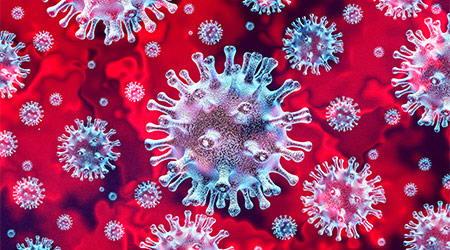What role do HVAC systems play in spreading or curtailing the spread of the coronavirus in healthcare facilities? While early efforts to control the COVID-19 pandemic focused on sanitizing surfaces, the focus quickly turned to the role played by airflow through facilities. Now, debate continues on the need for scientific evidence of airborne transmission.
A Public Health Agency of Canada report warned recently that poor ventilation can lead to COVID-19 outbreaks through airborne transmission indoors, but the agency’s Ontario counterpart has yet to follow suit, according to the Toronto Star.
“Outbreaks have been linked to poor ventilation where the virus appears to have been transmitted through aerosol production from infected individuals that became concentrated in the air over time,” according to the report, which includes a full breakdown of prevention strategies, including opening windows and updating HVAC system
Last July, 239 experts called on the World Health Organization to acknowledge the possibility of airborne transmission. Public Health Agency of Canada added aerosols as a possible cause of COVID-19 transmission in early November, but critics of Public Health Ontario have been arguing that the latter body has been slow to acknowledge the possible severity of airborne transmission and the need to follow other health authorities in updating its stance.
But Ontario Ministry of Labour’s latest guidance document — from August — is prefaced with a statement that warns against a lack of evidence for airborne transmission.
“In general, while there is plausibility of COVID-19 transmission by inhaled virus in air particularly in crowded, poorly ventilated settings, there is limited epidemiological evidence that this occurs,” it reads. “Specifically, the overall scientific evidence does not indicate that transmission of COVID-19 occurs via HVAC systems at this time.”
Click here to read the article.

 Contaminants Under Foot: A Closer Look at Patient Room Floors
Contaminants Under Foot: A Closer Look at Patient Room Floors Power Outages Largely Driven by Extreme Weather Events
Power Outages Largely Driven by Extreme Weather Events Nemours Children's Health Opens New Moseley Foundation Institute Hospital
Nemours Children's Health Opens New Moseley Foundation Institute Hospital Code Compliance Isn't Enough for Healthcare Resilience
Code Compliance Isn't Enough for Healthcare Resilience Ribbon Cutting Marks First Phase Completion for New Montefiore Einstein Facility
Ribbon Cutting Marks First Phase Completion for New Montefiore Einstein Facility